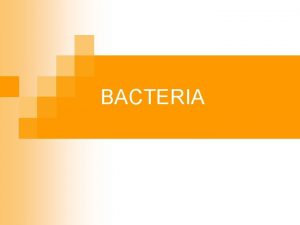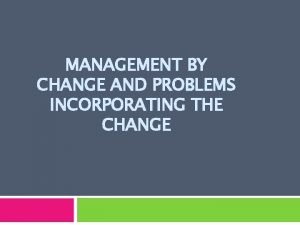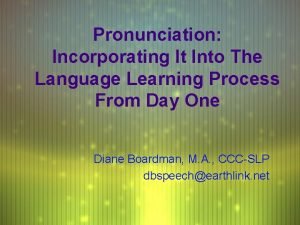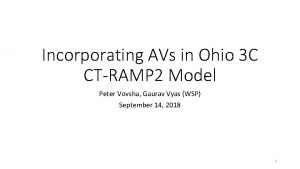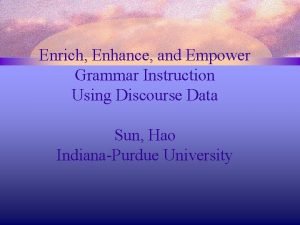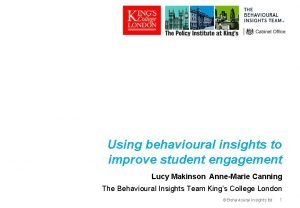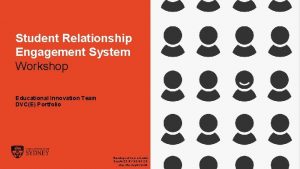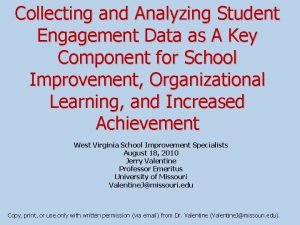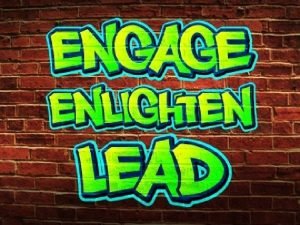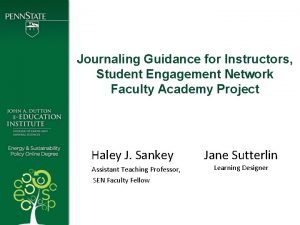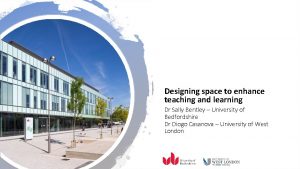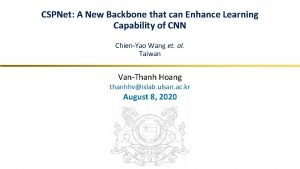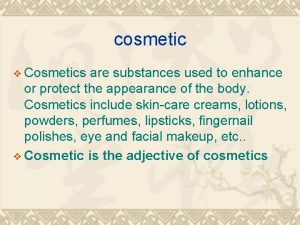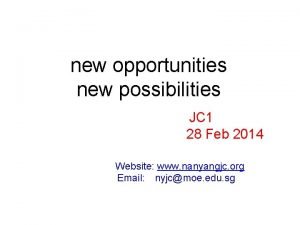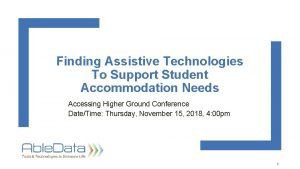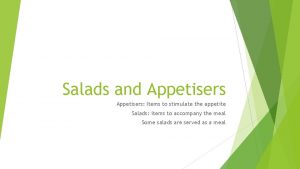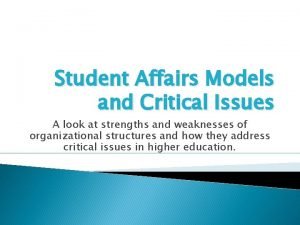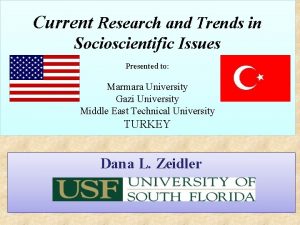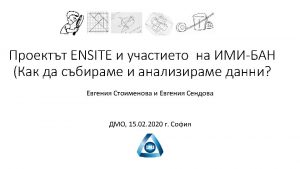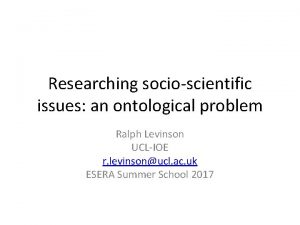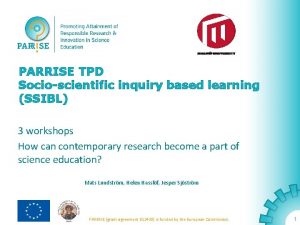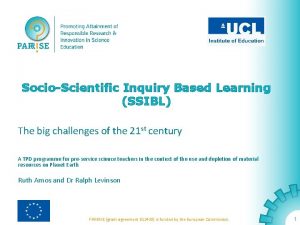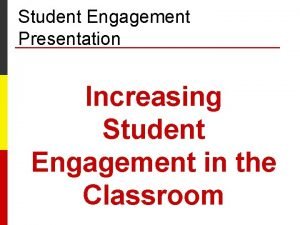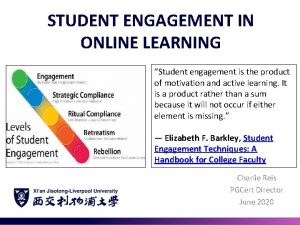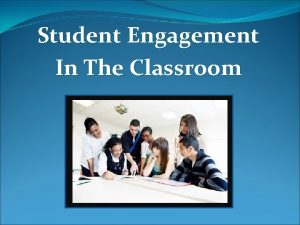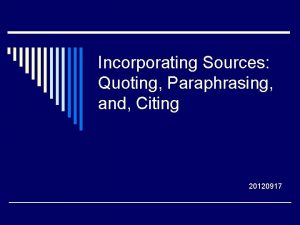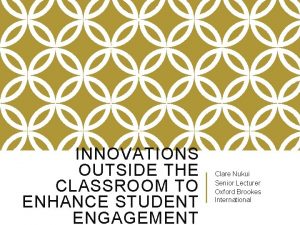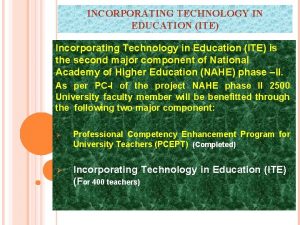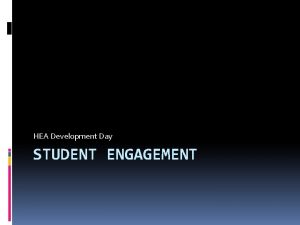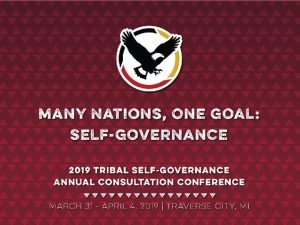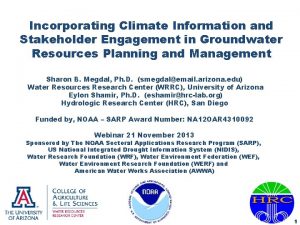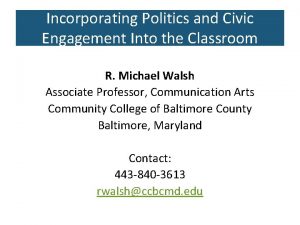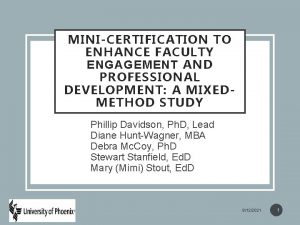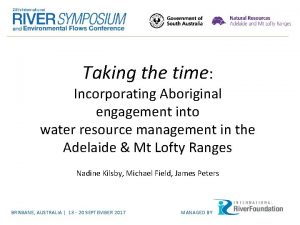Incorporating SocioScientific Issues to Enhance Student Engagement and


























- Slides: 26

Incorporating Socio-Scientific Issues to Enhance Student Engagement and Three-Dimensional Learning Maia Binding, SEPUP, Lawrence Hall of Science UCB CEO, 337 Cory Hall, February 8, 2018 This material is based upon work funded by the National Science Foundation under Grant # NSF DRL 1418235. Any opinions, findings, and conclusions or recommendations expressed in this material are those of the authors and do not necessarily reflect the views of the National Science Foundation.

Implementing New Standards Curriculum – instructional materials Classroom Assessment – formative & summative Instruction – teaching tools

What is 3 -D Learning? Performance Expectations Science and Engineering Practices Disciplinary Core Ideas Links to Common Core Crosscutting Concepts

What is 3 -D Learning? The practices are the processes of building and using the core ideas to make sense of the natural and designed world, and the crosscutting concepts hold the discipline together. Crosscutting Concepts Practices Core Ideas

Disciplinary Core Ideas (DCIs) • Physical Science • • Matter and its interactions Motion and stability: Forces and interactions Energy Waves and their applications in technologies for information transfer • Life Science • • From molecules to organisms: Structures and processes Ecosystems: Interactions, energy, and dynamics Heredity: Inheritance and variation of traits Biological evolution: Unity and diversity • Earth and Space Science • Earth’s place in the universe • Earth’s systems • Earth and human activity • Engineering design

Science and Engineering Practices (SEPs) • Asking Questions and Defining Problems • Developing and Using Models • Planning and Carrying Out Investigations • Analyzing and Interpreting Data • Using Mathematics and Computational Thinking • Constructing Explanations and Designing Solutions • Engaging in Argument from Evidence • Obtaining, Evaluating, and Communicating Information

Crosscutting Concepts (CCCs) • Cause and Effect • Energy and Matter • Patterns • Scale, Proportion, and Quantity • Stability and Change • Structure and Function • Systems and System Models

Why Issues? In order for students to develop a sustained attraction to science and for them to appreciate the many ways in which it is pertinent to their daily lives, classroom learning experiences in science need to connect with their own interests and experiences. Next Generation Framework National Research Council, 2011

Moving NGSS into Practice • Four Partners: • • Funding PI and PD Lead: AMNH Instructional Materials: Lawrence Hall of Science Research: University of Connecticut Evaluation: West. Ed • Four-year project began September 2014

Project Overview • Develop an NGSS-aligned middle school ecology curriculum unit and assessments • Develop a professional development program to support teacher implementation • Conduct: • Formative evaluation of the curriculum • Formative evaluation and research on the professional development • Development of and research on teacher measures

Project Timeline Timeframe Milestones September 2014 – July 2015 • Develop first field test instructional materials • Develop first field test PD model August 2015 – February 2016 • 25 NYC teachers field test • Expert panel review March 2016 – July 2016 • Revise materials and PD model for second field test August 2016 – February 2017 • 25 NYC teachers field test • Second expert review March 2017 – July 2017 • Revise materials and PD model for final field test August 2017 – February 2018 • 25 NYC teachers field test • Further review if needed March 2018 – August 2018 • Final revisions to materials and PD model

Curriculum Development and Design Backward design approach • Define learning goals • Draft assessments • Develop learning activities Use the Five Tools and Processes for Translating the NGSS (developed by AMNH, BSCS, West. Ed) for initial development and planning Use the BSCS 5 E Instructional Model (Bybee et al, 2006; Bybee, 2013) • Engage, Explore, Explain, Elaborate, Evaluate

SEPUP Development Steps 1. Identify targeted learning outcomes (PEs) 2. Determine acceptable evidence of student learning to develop performance tasks 3. Develop instructional sequences to provide students opportunities to learn DCIs, CCCs, and SEPs

Disruptions in Ecosystems – Ecosystem Interactions, Energy, and Dynamics • Based on a bundle of PEs and associated DCIs, SEPs, CCCs and CCSS for ELA and Mathematics • MS-LS 2: Ecosystems: Interactions, Energy, and Dynamics • MS-ESS 3: Earth and Human Activity • MS-PS 1: Matter & Its Interactions


Big Ideas & Phenomena 1. 2. 3. 4. 5. Humans can affect the relationships among organisms in an environment. Natural disasters can affect the transfer of energy and the cycling of matter in ecosystems. The growth of organisms and populations are limited by the available resources. The introduction of a new organism can affect the stability of an ecosystem. Humans are using more resources, causing the need for solutions.

Example Activity • From a model middle school NGSS-aligned unit on Ecology • Overarching issue in chapter: invasive species (Zebra mussel in the Hudson River) • Final activity in the chapter • Evaluate activity in the 5 E cycle

Chapter 4 Phenomena/Storyline Unit Theme: Disruptions in Ecosystems Chapter 4 Phenomena: Invasion of the Zebra Mussel in the Hudson River Ecosystem Engage Explore Explain Elaborate Evaluate How might the introduction of the zebra mussel affect the health of the Great Lakes and Hudson River ecosystems? What biotic and abiotic factors are affected when a new species is introduced to an ecosystem? How did the zebra mussel initially affect the health and biodiversity of the Hudson River ecosystem? What are the long-term effects of the zebra mussel invasion of the Hudson River? Has the quagga mussel had a positive or negative effect on the Lake Michigan ecosystem?



NGSS Alignment DCIs SEPs CCCs MS LS 2. C. 1 Asking Questions Stability and Change MS LS 2. A. 1 Analyzing and Interpreting Data Cause and Effect MS LS 2. A. 2 Engaging in Argument from Evidence Patterns MS LS 4. D. 1 PEs: MS-LS 2 -4 and MS-LS 2 -1

Where did you see 3 -D learning? Performance Expectations Science and Engineering Practices Disciplinary Core Ideas Links to Common Core Crosscutting Concepts

Assessments • Three-dimensional assessments • Embedded in learning activities • In a culminating Evaluate activity (linked to chapter phenomena & issues) • In end-of-chapter tests


Acknowledgements Manisha Hariani & Barbara Nagle, LHS Dora Kastel & Anna Mac. Pherson, AMNH Bianca Montrosse-Moorhead & Suzanne Wilson, UCONN Katherine Stiles, West. Ed NSF This material is based upon work funded by the National Science Foundation under Grant # NSF DRL 1418235. Any opinions, findings, and conclusions or recommendations expressed in this material are those of the authors and do not necessarily reflect the views of the National Science Foundation.

Contact Info • Maia Binding, SEPUP, Lawrence Hall of Science, mbinding@berkeley. edu • Presentation will be available on sepuplhs. org • Full unit (2 nd Field Test Ed) available on nextgenscience. org (search for Disruptions in Ecosystems) • Zebra mussel materials (graphing tool, readings) are on www. amnh. org/education/resources/rfl/web/riverecology
 Socioscientific issues examples
Socioscientific issues examples Picking up and incorporating dna from dead bacterial cells
Picking up and incorporating dna from dead bacterial cells Incorporating the change
Incorporating the change Nested quotation example
Nested quotation example Incorporating pronunciation
Incorporating pronunciation Incorporating in ohio
Incorporating in ohio Unconventional cash flow
Unconventional cash flow Grammar to enrich and enhance writing
Grammar to enrich and enhance writing Lucy makinson
Lucy makinson Innovation workshop sydney
Innovation workshop sydney Australasian survey of student engagement
Australasian survey of student engagement Student engagement data collection
Student engagement data collection Student engagement presentation
Student engagement presentation Student engagement network
Student engagement network Articles added to complete or enhance an outfit
Articles added to complete or enhance an outfit Enhance an image
Enhance an image Cspnet
Cspnet Cosmetics are substances that are used to enhance
Cosmetics are substances that are used to enhance Enhance an image
Enhance an image Nus grading system
Nus grading system Enhance life
Enhance life Type of salad which stimulate one’s appetite.
Type of salad which stimulate one’s appetite. Nnn hypnosis
Nnn hypnosis Critical issues in student affairs
Critical issues in student affairs How's your last weekend
How's your last weekend What did they do last weekend
What did they do last weekend National clearinghouse student tracker
National clearinghouse student tracker

